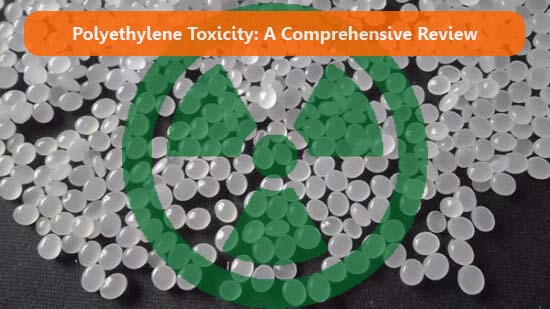Polyethylene Toxicity: A Comprehensive Review
Polyethylene, recognized as the most widely used plastic, finds its primary application in packaging. This versatile material comes in several common forms, including:

1. Low-Density Polyethylene (LDPE):
- LDPE is employed in food storage bags, garbage bags, shopping bags, toys, and household items due to its high flexibility.
- The plastic recycling code for LDPE is number 4.
2. High-Density Polyethylene (HDPE):
- HDPE possesses high resistance and moderate hardness. It has a higher melting point compared to LDPE and is sterilizable.
- Common applications include milk and household cleaner bottles, food storage bags, shopping bags, household item components, and toys.
- The plastic recycling code for HDPE is number 2.
Health and Environmental Impacts of Polyethylene
Is Polyethylene Safe?
In general, polyethylene is considered one of the safest plastics. Clean Production Action, in assessing the hazardous effects of plastics, has labeled polyethylene, along with polypropylene, as one of the "safer" plastics.
Does Polyethylene Produce Harmful Gases?
Yes, polyethylene does produce harmful gases, but usually at a lower rate compared to other plastics like PVC and polystyrene.
Does Polyethylene Leak into Food and Beverages?
While polyethylene is generally stable and regarded as a safe plastic for food and beverages, studies have shown that additives in plastics may leach. According to research, pure polyethylene resin did not show any substances with adverse effects on hormones. However, common food containers made of polyethylene may experience leakage. Leakage from plastic food containers increases with temperature, duration of contact, and the acidity of the food or beverage. Therefore, the manner of use and interaction with the product must be taken into account.
Is Polyethylene Carcinogenic?
According to safety information sheets, polyethylene has not been classified as a carcinogenic substance by safety organizations such as the International Agency for Research on Cancer (IARC) and the Occupational Safety and Health Administration (OSHA). However, it's important to note that not all types of polyethylene are the same, and plastics often use additives such as fillers, softeners, and other substances to enhance their properties.
Avoidance or cautious use:
While avoiding the use of any plastic is preferable, if there is a need to use products containing polyethylene, the risk of contact with it will likely be low.
Conclusion:
Polyethylene, being the most common plastic, plays a significant role in our daily lives, especially in packaging. While it is generally considered safe, it is crucial to be aware of potential risks and take necessary precautions, considering factors such as additives, container types, and the intended use. As with any material, responsible usage and disposal practices are essential for minimizing environmental impact. Advances in research and technology will further contribute to our understanding of the safety and environmental implications of polyethylene and other plastics.
Read More: